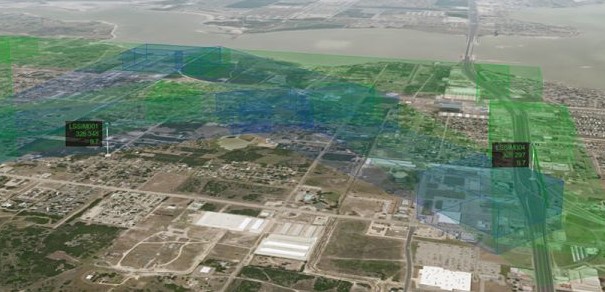A team of companies and universities led by UNT Engineering has successfully completed testing scenarios developed by NASA as part of Advanced Air Mobility National Campaign Developmental Test simulation activity.
The scenarios consisted of collecting a set of simulation data for low-flying traffic and in-flight en route contingency operation where dynamic rerouting needed to be negotiated between the airspace provider and the vehicle.
“For the in-flight route, we needed to demonstrate through simulations that the vehicle could send and receive information in real-time and be able to make quick adjustments to its route,” said Kamesh Namuduri, professor in the Department of Electrical Engineering.
The UNT team is one of 11 teams selected to work with NASA as airspace providers on its Advanced Air Mobility National Campaign, which seeks to promote public confidence in low-flying new entrants as well as accelerate the realization of emerging aviation markets for passenger and cargo transportation.
The consortium led by UNT included the following partners who contributed to AAM NC-DT:
- Frequentis, California Inc. in Monterey, California, deployed MosaiX SWIM, configured as a data exchange platform, and connected the UNT partners’ systems to the NASA systems.
- The Lone Star Unmanned Aircraft System Center of Excellence at Texas A&M University in Corpus Christi injected numerous simulations and used its in-house Situational Awareness tool, Cirrus, to monitor the planned flight volumes and simulated flights in real time.
- The Center for Collaborative Adaptive Sensing of the Atmosphere at the University of Massachusetts in Amherst, Massachusetts, deployed its City Warn real-time weather alerting service.
- OneSky of Exton, Pennsylvania, deployed its product, Unmanned Aircraft System Service Supplier.
- ResilienX, Inc. of Syracuse, New York, provided in-time system-wide safety assurance capabilities through its FRAIHMWORK platform.
- Unmanned Experts Inc. of Denver, Colorado, provided a comprehensive set of Operational Concepts.
UNT and its partners plan to participate in another round of testing with NASA in 2021.
(Image: Simulation showing the 4D airspace trajectory, UNT)
For more information visit:
www.engineering.unt.edu




